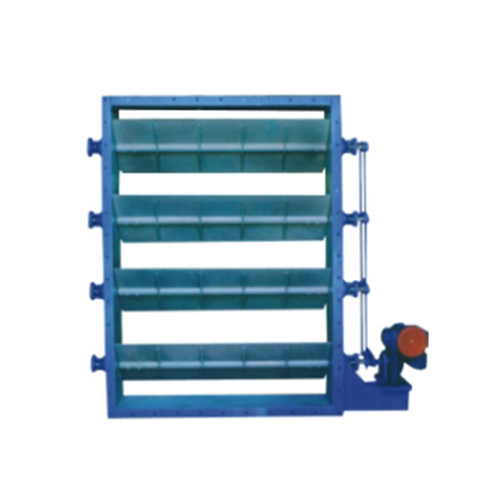
Best Practices for Ball Valve Operation Safety
Introduction
Ball valves are widely used in industrial, commercial, and residential applications due to their durability, reliability, and ease of operation. However, improper handling, installation, or maintenance can lead to safety hazards, including leaks, valve failure, and even catastrophic accidents. Ensuring safe operation requires adherence to best practices in installation, operation, maintenance, and emergency response.
This guide outlines key safety practices for ball valve operation, covering:
1. Pre-Installation Considerations
2. Proper Installation Procedures
3. Safe Operation Guidelines
4. Maintenance and Inspection
5. Emergency Response and Troubleshooting
By following these best practices, operators can minimize risks and ensure long-term valve performance.
---
1. Pre-Installation Considerations
1.1 Valve Selection
- Material Compatibility: Ensure the valve material (e.g., brass, stainless steel, PVC) is compatible with the fluid (liquid or gas) to prevent corrosion or chemical reactions.
- Pressure and Temperature Ratings: Select a valve rated for the maximum system pressure and temperature.
- End Connections: Verify the valve’s connection type (threaded, flanged, welded) matches the piping system.
1.2 System Assessment
- Flow Direction: Some ball valves are unidirectional; improper installation can cause seal damage.
- Piping Alignment: Misalignment can stress the valve, leading to leaks or failure.
- Accessibility: Ensure the valve is easily accessible for operation and maintenance.
1.3 Safety Precautions
- Lockout/Tagout (LOTO): Before installation, isolate the system to prevent accidental fluid release.
- Personal Protective Equipment (PPE): Wear gloves, goggles, and protective clothing when handling valves in hazardous environments.
---
2. Proper Installation Procedures
2.1 Handling and Storage
- Store valves in a clean, dry environment to prevent contamination.
- Avoid dropping or striking the valve, as this can damage internal components.
2.2 Installation Steps
1. Inspect the Valve: Check for defects, debris, or shipping damage.
2. Clean Piping: Remove dirt, rust, or welding slag from pipe ends.
3. Apply Thread Sealant (if applicable): Use PTFE tape or pipe dope on threaded connections, avoiding excess sealant that could obstruct flow.
4. Tighten Properly: Use a torque wrench to avoid overtightening, which can crack the valve body.
5. Check Alignment: Ensure the valve is not under stress due to misaligned pipes.
2.3 Post-Installation Testing
- Conduct a pressure test to verify leak-free operation.
- Slowly open and close the valve to check for smooth operation.
---
3. Safe Operation Guidelines
3.1 Opening and Closing Procedures
- Slow Operation: Avoid rapid opening/closing to prevent water hammer (pressure surges).
- Partial Opening Risks: Some ball valves are not designed for throttling; prolonged partial opening can cause seat erosion.
- Use Proper Tools: Handles should be used as intended; avoid using excessive force or improvised tools.
3.2 Position Indication
- Ensure the valve handle position (open/closed) is clearly visible.
- For automated valves, verify position indicators or limit switches function correctly.
3.3 Pressure and Temperature Monitoring
- Never exceed the valve’s rated pressure/temperature.
- If abnormal conditions occur (e.g., excessive vibration, noise), shut down the system and inspect.
3.4 Lockout/Tagout (LOTO) for Maintenance
- Before servicing, isolate the valve and depressurize the system.
- Use locks and tags to prevent accidental operation.
---
4. Maintenance and Inspection
4.1 Routine Inspection
- Visual Checks: Look for leaks, corrosion, or physical damage.
- Operational Test: Cycle the valve periodically to prevent sticking.
- Lubrication (if applicable): Some valves require periodic lubrication for smooth operation.
4.2 Preventive Maintenance
- Replace worn seals, O-rings, or gaskets before failure occurs.
- Clean internal components if debris buildup is detected.
4.3 Common Failure Signs
- Leakage: Indicates seal failure or improper seating.
- Stiff Operation: May suggest internal corrosion or debris.
- Handle Misalignment: Could mean internal damage or excessive wear.
---
5. Emergency Response and Troubleshooting
5.1 Leak Response
- Minor Leaks: Tighten connections or replace seals if safe to do so.
- Major Leaks: Shut off upstream/downstream valves and evacuate if hazardous.
5.2 Valve Stuck in Position
- Do Not Force: Excessive torque can break the valve.
- Apply Penetrating Oil: If corrosion is suspected, allow time for penetration before attempting to move.
5.3 Fire and Chemical Exposure Risks
- If a valve is exposed to fire, do not operate until inspected.
- For chemical leaks, follow appropriate hazardous material protocols.
---
Conclusion
Ball valves are essential components in fluid control systems, but their safe operation depends on proper installation, handling, and maintenance. By following these best practices, operators can prevent accidents, extend valve lifespan, and ensure system reliability.
Key takeaways:
✔ Select the right valve for the application.
✔ Install correctly to avoid stress and leaks.
✔ Operate smoothly to prevent damage.
✔ Conduct regular inspections and maintenance.
✔ Follow emergency protocols for leaks or failures.
Adhering to these guidelines will enhance safety and efficiency in any ball valve application.
---
Word Count: ~2000
Situs web ini menggunakan cookie untuk memastikan Anda mendapatkan pengalaman terbaik di situs web kami.
Komentar
(0)